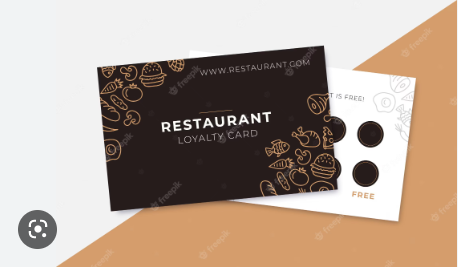Awareness of your restaurant’s stats is becoming more important due to rising costs and escalating competition. The only way to succeed as a restaurant owner or manager is to get the most value out of every dollar you invest in your company. Your restaurant’s return on investment (ROI) is a more accurate indicator of your performance, even if this enterprise calls for originality and ability.
More:restaurant booking software
ROI is one of the most important metrics you need to track, from opening your business to beginning different promotions. But how to measure this metric?
To measure a restaurant’s return on investment (ROI), you can calculate the profit margin, the ratio of profit to revenue. To do this, you will need to know the restaurant’s revenue, cost of goods sold (COGS), and operating expenses.
- First, calculate the profit by subtracting COGS and operating expenses from revenue.
- Next, divide the profit by the revenue and multiply by 100 to get the profit margin as a percentage.
- To calculate ROI, divide the profit by the total investment (e.g. the cost of opening the restaurant) and multiply by 100.
Let us get to know the steps to measure ROI for your restaurant:
- Sales per square foot: This metric measures how efficiently your restaurant uses its space. A higher sales per square foot indicates that your restaurant generates more revenue for its space.
- Employee turnover rate: High employee turnover can be costly, as it requires recruiting and training new staff. A low employee turnover rate can indicate that your staff is happy and motivated.
- Customer acquisition cost: This metric measures the cost of acquiring a new customer. It is calculated by dividing the total marketing and advertising expenses by the number of new customers acquired.
- Food cost percentage: This metric measures how much your revenue goes towards food costs. A lower food cost percentage indicates that your restaurant manages its food costs effectively.
- Net promoter score (NPS): NPS measures customer satisfaction and loyalty. A high NPS indicates that customers will likely recommend your restaurant to others.
Another important metric to track is the restaurant’s occupancy rate, which measures how effectively the restaurant uses its seating capacity. You can calculate this by dividing the number of seats occupied by the total number of available seats and multiplying by 100. A high occupancy rate indicates that the restaurant effectively utilizes its space and generates revenue.
It is also important to track the restaurant’s return on assets (ROA), which measures its profitability in relation to its assets. To calculate ROA, divide the restaurant’s net income by its total assets. A high ROA indicates that the restaurant generates a high return on its assets.
Another important aspect of measuring the ROI of a restaurant is to track its customer satisfaction and loyalty. It is important to understand what your customers want and what they are satisfied with. Surveys, feedback forms, and online reviews are some of the ways you can gather this information.
You should also keep track of the restaurant’s reputation, which can greatly impact its ROI. Reputation can be measured through online reviews, social media mentions, and word-of-mouth recommendations. A positive reputation can attract more customers and increase revenue, while a negative reputation can cause a decrease in business.
To track the ROI of your restaurant, it’s crucial to monitor all these metrics regularly and make data-driven decisions based on the insights you gain. By keeping a close eye on your restaurant’s performance, you can identify areas for improvement and make adjustments that will help increase your ROI.
Another important aspect to consider when measuring the ROI of a restaurant is to measure the effectiveness of marketing and advertising campaigns. This can be done by tracking the number of new customers acquired as a result of a campaign and comparing it to the cost of the campaign.
Additionally, measuring customer lifetime value (CLV) can indicate a customer’s potential value over their lifetime. CLV can be calculated by multiplying the average purchase value by the number of purchases per year and the average customer lifespan. This can help you understand the long-term value of acquiring a customer.
Furthermore, it is important to measure the efficiency of your operations, such as the speed of service, kitchen turnaround times, and inventory management. This can help you identify areas for improvement and optimize your operations to increase efficiency and reduce costs.
CONCLUSION Measuring the ROI of a restaurant is a complex task that requires tracking multiple metrics and considering various factors. It’s important to track financial and non-financial metrics and make data-driven decisions based on gained insights. By regularly monitoring the performance of your restaurant, you can identify areas for improvement and make adjustments that will help increase the ROI over time.



